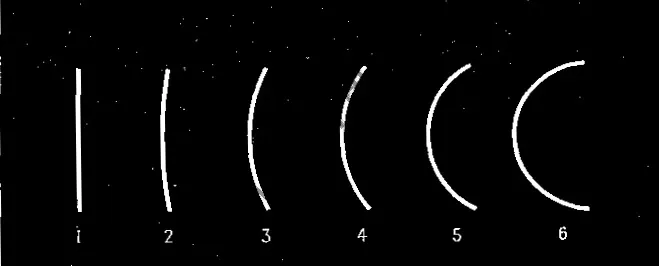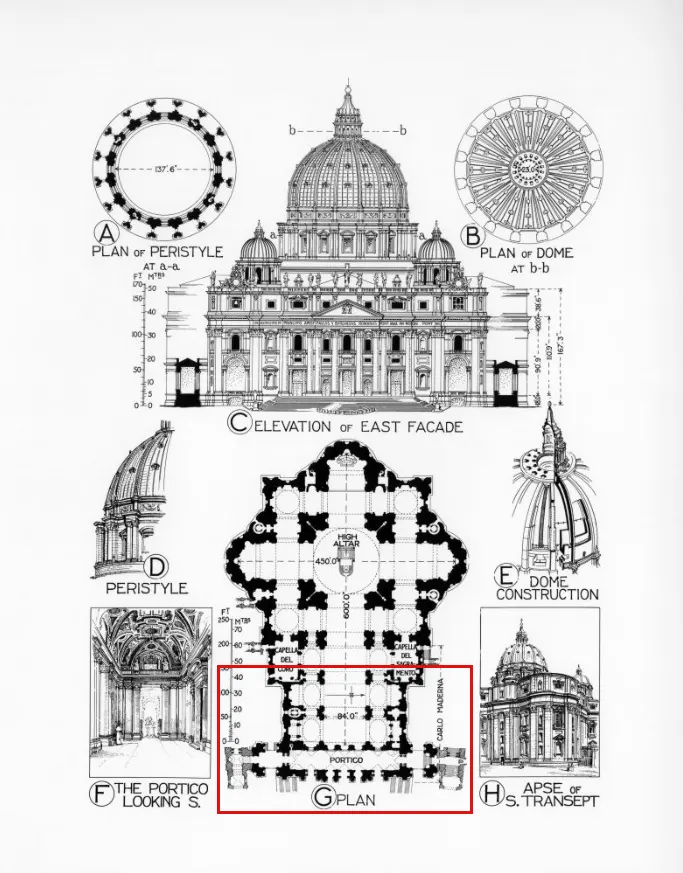Architecture and Art: Elements of Design-1 is the third article of a series of articles 1,2 about the art dimension in architecture. This article analyzes the role of art in the creation of architecture. Moreover, art direct influence on the design process of function and form. In this article, I will show how painters and sculptors designed by reflecting the facades on the plans and vice versa. As well, I will show how sculptors created mass by modifying the plans to fit the external form.
Visual art people, such as painters, sculptors, architects, and so on, use several elements of design in their work. Painters and sculptors rely in their work on various characteristics which include techniques, methods, tools, and rules, and these are the base for any artwork. Building an artwork needs elements to create these characteristics of art.
Certainly, Visual art people build their work relying on the seven elements of design. The elements used by art people are the materials used to build any design and artwork. These include
Line, Direction, Shape, Size, Texture, Value, and Color
This article focuses on the elements of design-1 -1, including line, direction, and shape.
Elements of design- Line, Direction, Shape- Art
Figure 1, the types of lines and the relationship between the lines. Lines on the extreme left and right sides are in harmony while the lines on the extreme opposite sides are in contrast or opposition. (The figure shows the first elements of design -1)

Painters and sculptors use these types of lines to build an artwork see Figure 2, lines in artwork by Mondrian.
Figure 3, lines in various directions. The four main directions are V vertical, H horizontal, L left Oblique, R right Oblique. Lines adjacent to each other are in harmony while opposite are in contrast. (Figure shows the second elements of design -1)

Painters use various types of lines to express several meanings in their paintings. Figure 4, the painter used lines in different forms and directions to show the abstract of his artwork.
A series of lines of different directions forms defines a shape or pattern, triangular, round, and so on. See Figure 5, for the different types of shapes. (figure show the third elements of design -1)

In Figure 6, the painter combines all three elements to show the idea, concept, and meaning of his painting. As well, the artwork shows the technique and style used by the painter in his series of paintings.
In the previous article, I showed that Michael Angelo was commissioned to conduct a design for Saint Peter’s Basilica. The basilica was already designed by another architect/painter but was not completed. Similarly, Michael added an extension (marked in red in Figure 8) and completed the design that exists nowadays.
Michael has reflected the design of the new elevation by using lines, shapes, and directions in the façade columns in order to reflect the rules of design. His façade design influenced the design of the basilica plans because he created pillar and column base interval plans that fit the façade. See Figure 7, the basilica façade, and Figure 8, the basilica plans after adding the front part.


Indeed, in this example, we can see how painters and sculptors used the elements of design . The painter designed the façade by creating a rhythm of columns (lines) in addition filling the in-between with various shapes of decorations and windows. The elevation is divided further by horizontal lines to fit the building theme and to break the continuity of the vertical design of lines. He reflected the lines in creating an internal portico of column pillars and bases. Furthermore, some shapes of open voids in the façade give light to the portico.
Elements of design- Line, Direction, Shape- Architecture
Painters and sculptors who used elements of design transferred them to architecture for use. Adding to that other visual art influencers who influenced the discipline of architecture. As in art, architecture, and architects, even before the creation of formal academic education in architecture educated the elements of design. Certainly, in architecture, all designs start from a point. A point is defined as the mark of a position in space.
Moreover, A point defines a space surrounding it to give it importance. Also, A point is centralized and a focal point in space. Figure 9 shows that the equestrian statue of Marcus Aurelius marks a point in space surrounded by three buildings. A focal point to give importance to the surrounding space was designed by Micheal Angelo.

Definitely, an extension of a point to another point marks an axis and direction, such as a pathway in external space or two buildings. Figure 10 shows the gardens of the Versailles Palace. For instance, starting from the external space of the palace towards the backside garden, lie more than three points (fountains). The palace connects the Latona fountain through the external garden near it. Besides, the fountain connects through a long path of garden appolo fountain. Finally, this fountain connects the latter by a long lake ending in a circular garden of various paths called the etoil royal.

A line connects various points; it has length, position, and direction. Similarly, in architecture, a line could be a thin wall, a thick column, a series of connected trees, or any vertical element in space or a building. Additionally, one of the various elements is the line in designing a façade, a site plan of buildings, a garden, or even the internal space of a building.
Figure 11 shows the design of a temple in Athens where the line is one of the major elements of the façade design. A line of thick value ( a column) repeated in a series of adjacent locations creates the external façade of the temple.
Architects translate the use of a line, and that is a major element of design in art, into architecture by locating a vertical element. An element that is a major element, especially in religious buildings like mosques, churches, basilicas, or castles.
The Hagia Sophia Minaret at the corners of the mosque defines the mass of the mosque, as well as the space surrounding it. Similarly, the vertical elements created a focal point for the building, which is the central dome. See Figure 12, external view of the four minarets of the mosque.
A Line of different directions generates a plane. A plane is a shape generated by connecting several lines in different directions. Indeed, linear elements could be a series of points (columns), an array of arcades, solid thick walls, or roof beams of any material to create planes or shapes.
The Abbey of Saint-Pierre in Moissac is one of the oldest monastic complexes in the south-west of France. Additionally, the internal courtyard surrounded by a wall of columns and arches, creating a plane with an open view of the courtyard, is an example of generating a plane or shape using linear elements of points and lines. See Figure 13, Abbey of Saint-Pierre in Moissac.
Here I have shown and analyzed the intervention and direct connection between the design elements used in art and how architects reflected that use in architecture. In the next article, I will continue the remaining elements of design in architecture and art.






[…] Architecture and Art: Elements of Design -1 […]
[…] Architecture and Art: Elements of Design -1 […]
[…] Architecture and Art: Elements of Design -1 […]
[…] Architecture and Art: Elements of Design -1 […]
[…] Architecture and Art: Elements of Design -1 […]
[…] Architecture and Art: Elements of Design -1 […]